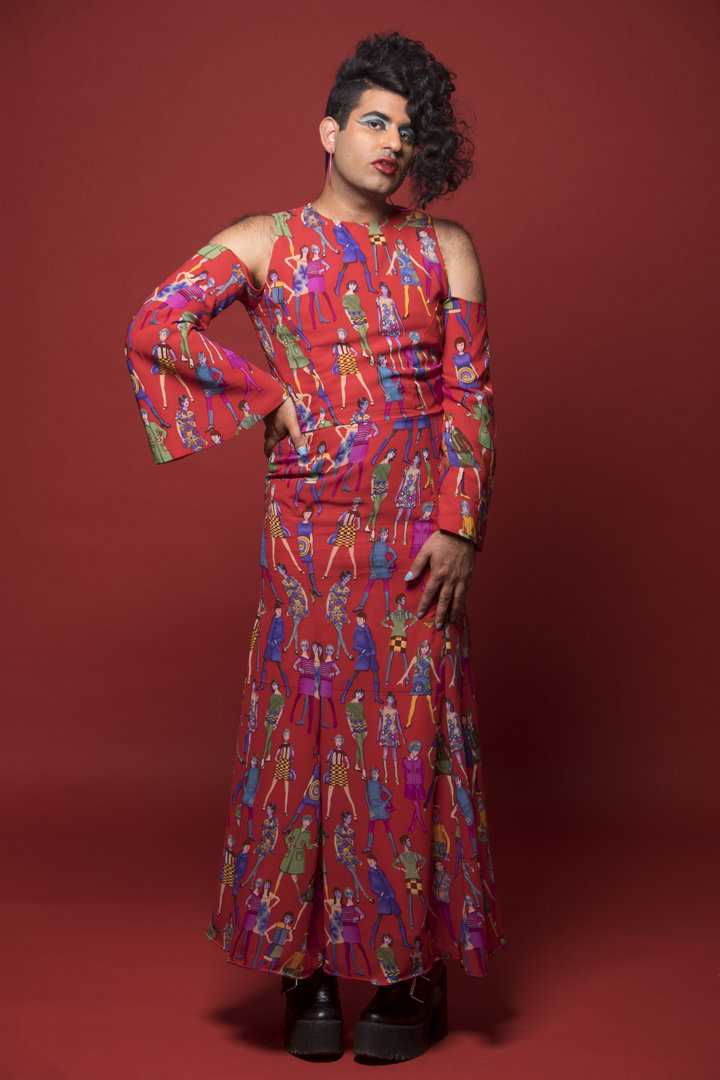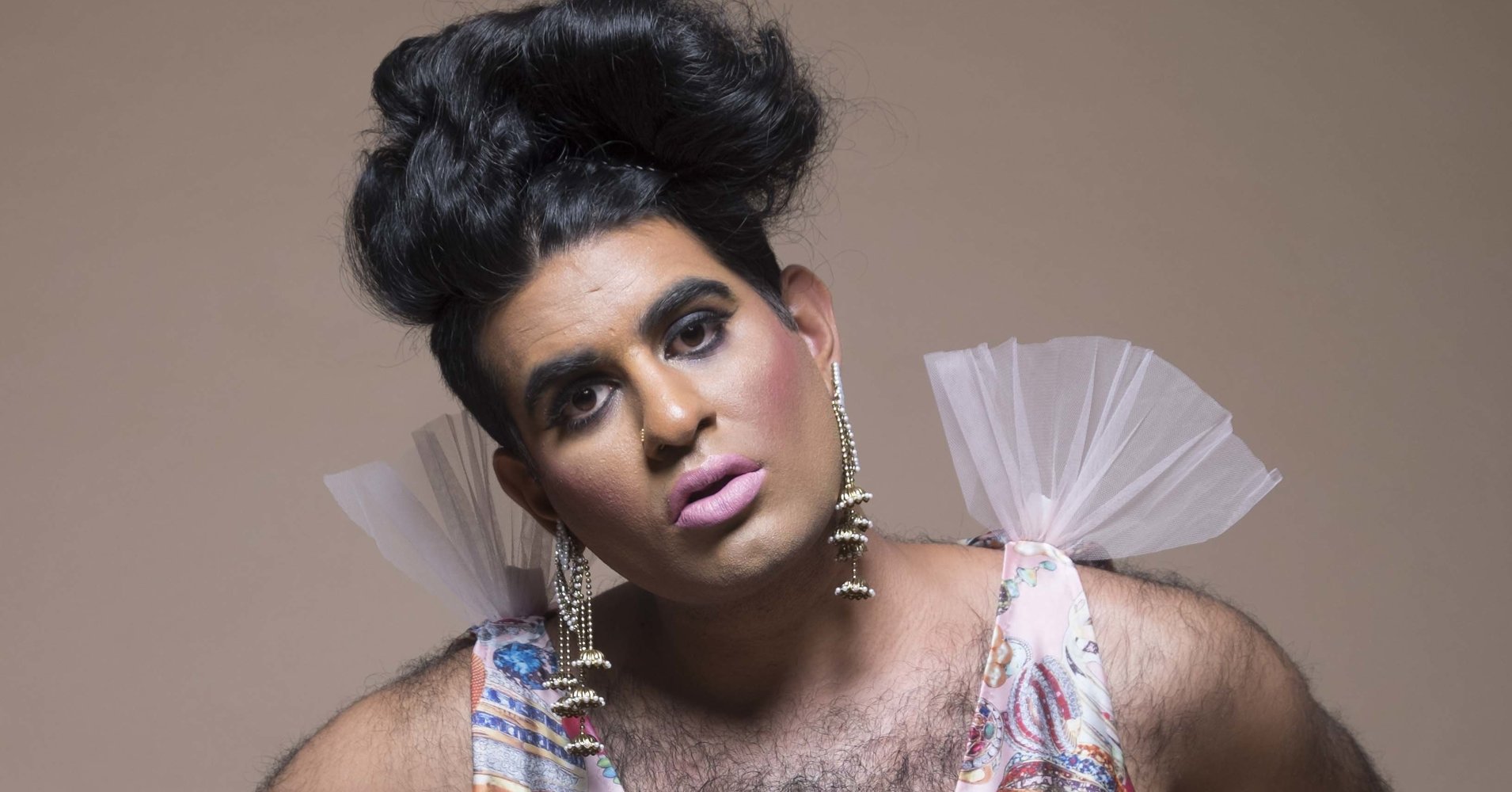[ad_1]
Poet Alok Vaid-Menon goes where few others dare to go.
A gender non-conforming performance artist and writer who uses the pronoun “they,” Vaid-Menon has received international attention for challenging the gender binary. But what makes their work stand out is the way they have normalized discussions of shame, trauma and violence against trans and gender non-conforming people of color.
The power of Vaid-Menon’s art lies in their social justice advocacy, informed by their own journey in a world that often punishes non-binary people for being who they are. Vaid-Menon is open about facing harassment and violence on a daily basis ― but as the poet explains, “I don’t wait for validation from others, I give it to myself, darling!”
Vaid-Menon was recently the youngest recipient of the prestigious Live Works Performance Act Award, granted to 10 performance artists across the world. In 2017, they released their inaugural poetry chapbook, Femme in Public.
The artist recently spoke to HuffPost about their work, identities, and what they envision for a future in which trans and gender non-conforming people are safe.

Ayush Gupta
What does being non-binary mean to you?
Being non-binary is not just about my gender, but also about rejecting dichotomies and oppositional thinking, affirming my own complexity and simultaneity. Being non-binary isn’t just about being defined by my absence (I am not a man or a woman), but also by my abundance (I am far too expansive to be encapsulated by the gender binary). Being non-binary is about embracing my fluidity, my becoming, my journey without fixed destination.
How do gender and sexuality intersect with other systems of oppression (like race) for you in life and in your art?
Gender and sexuality don’t just intersect with other systems like race, they are created by and through them. What many people forget is that the gender binary was imposed on indigenous peoples across the world as part of a colonial project. Many societies have and continue to have alternative understandings of gender and sex outside of the white/Western definitions of “man” and “woman.” This is one of the many reasons why trans and gender non-conforming people of color (and especially Black and indigenous people) experience disproportionate rates of violence.
How does your South Asian culture influence how you see the world and the messages you put forth into the world?
Being South Asian affects everything for me. It’s difficult to parse out where culture begins and ends, where influence begins in and ends … I feel like it’s more of a sensibility, an attitude, a worldview and paradigm that seeps into everything I am and do. I worry that we spend so much time trying to pinpoint where “race” and “culture” live ― as if they are fixed and finite ― but I think they are much more pervasive and encompassing than we often think them to be.
What motivates/sustains you when it comes to performing?
When I am performing, I experience transcendent joy! I try my best to create an alternative world: one that is rooted in vulnerability, interdependence and play. There is nothing like that feeling. No matter the obstacles I face, I do whatever it takes so that I can return to the change and experience that. It’s soul-affirming!
In your opinion, what is the role of queer art and artists during tumultuous political times, like the one that we live in?
The paradox of queer art is that it is simultaneously undervalued as it is extracted for everyone else. Queer art isn’t fringe; it is mainstream culture. During times of crisis, we want to support initiatives that have immediate impact ― and yes, of course, that’s experience ― but we also need to support the cultural work of artists. Cultural work sustains our imagination, our ability to envision otherwise; it heals and sustains us, it critiques, it creates.
How do you deal with the violence you face on the street, and how can we better recognize the violence that trans and gender non-conforming people face?
What often hurts more than the actual harassment I experience is that I am rarely believed for it. So what I’ve started to do is to document it, to archive it ― in my poetry, on my social media, on the stage, everywhere I go. I say: “This is happening to me. And it hurts!” So many times when we are harassed, the impulse is to disappear ourselves and blame ourselves. What I push myself to do is to be public about it: show a mirror to the world and ask how it can let this happen to people like me.
How do you take care of yourself, and how do members of the LGBTQ community take care of each other?
I celebrate my own beauty on my own terms! I live in a world that constantly ridicules, insults and demeans me … so I don’t wait for validation from others, I give it to myself, darling! Other non-binary and gender non-conforming people have been so foundational to building me up ― making me feel like I’m not alone, like what I’m saying is right and needs to be said, like I am part of something greater than myself.
What have you learned about yourself by doing what you do?
I contain multitudes. I am in a constant state of flux. And that is thrilling, beautiful and wonderful.
What does Pride mean to you in 2018?
Affirming and celebrating that which we have been ashamed of.
The theme for HuffPost’s Pride coverage this year is #TheFutureIsQueer. What does a queer future look and feel like to you?
Being able to go outside wearing whatever I want without being harassed.
For LGBTQ Pride 2018, HuffPost is highlighting 30 different cultural influencers who have shifted the narrative when it comes to queer issues and whose work has contributed to building a more inclusive and equitable future for us all.
#TheFutureIsQueer is HuffPost’s monthlong celebration of queerness, not just as an identity but as action in the world. Find all of our Pride Month coverage here.
[ad_2]
Source link

